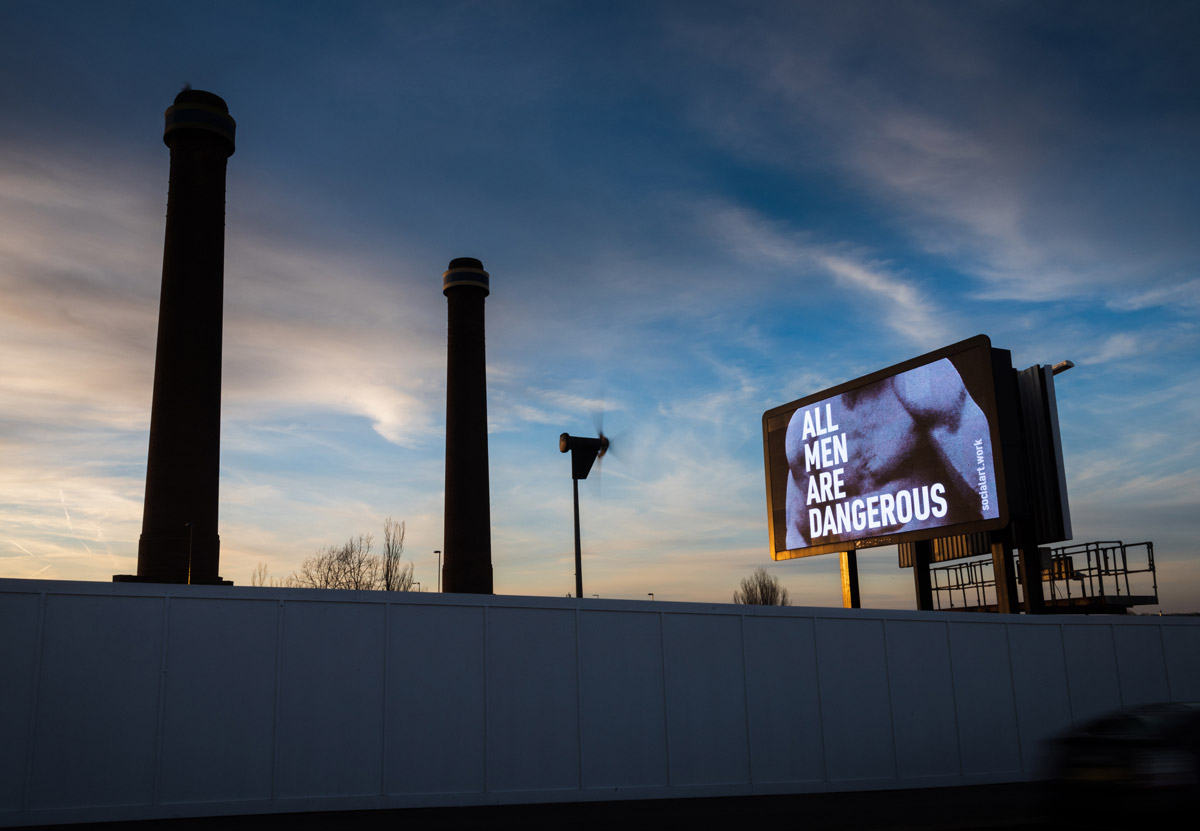We use the cookies _ga, _gat, _gid to collect anonymous data about how you use this site. OK.
The six artworks of the
Power and Gender (Men)
series are companions to
Power and Gender (Women)
2019.1.1 - 2019.1.6.
They convey a parallel investigation into the nature of masculinity, and its connection to power.
Firrell first presented the text
All Men Are Dangerous
as a digital projection for Tate Britain in 2006. At the time, there was armed conflict in Iraq and questions were being asked about the legality of the war.
It occurred to the artist that ‘men appear to be inherently dangerous, and hold the majority of power in the world, and this was the real issue in play’.
According to Firrell, armed conflict and war can be regarded as plural expressions of men’s inherent dangerousness. To a lesser degree, capitalism, too, can be seen as an abstract, formal expression of the same danger. Capitalism can be framed as a variety of abstracted war for resources, success and profits. In all likelihood capitalism’s form suits men’s natures so well because the system was initiated and developed by men.
When the text was re-presented on billboards in 2019, 'dangerousness' could have alluded to subtle and diffuse dangers like the risk-taking that caused the financial crisis in 2008 or the growing impact of climate change.
The
Power and Gender (Men)
series is presented entirely in black and white. Each billboard carries an image of Eugen Sandow, the world’s first professional body builder, to gender the artworks overtly male.
Eugene Sandow (Friedrich Wilhelm Müller 1867 - 1925).
When the series appeared on digital billboards and Adshel bus shelters in the UK cities of Sheffield and Leeds, it was inferred by some to be a straightforward attack on men.
There were complaints to Leeds council claiming the work constituted a ‘hate crime’ as defined in UK law. In social media, Firrell was accused of misandry. The artist’s Wikipedia page was vandalised. Bogus emails were sent to the artist’s studio implying that a police investigation was underway into an alleged hate crime.
In online forums, there were men who threatened to attack the billboards, or the artist, or both, until someone observed that doing so would rather prove the artist’s point that ‘all men are dangerous’. The strength of feeling aroused by this artwork cast a shadow over the rest of the series.
The inclusion of Sandow, intended as a celebration of the idea of maleness, was inferred as ‘body shaming’ men who failed to match up to the Greek ideal. Those artworks advocating equality for women were seen as prejudicial against men.
These reactions were surprising in many ways. Looked at cool-headedly, the observation that ‘all men are dangerous’ is no different from saying ‘all tigers are dangerous’. The statement doesn’t question the tiger’s right to exist. It doesn’t imply that tigers are lesser creatures or undesirable. In a straightforward way, it acknowledges the tiger has inherent qualities it is wise to be mindful of.
All Men Are dangerous
revealed something about the frame of mind of a particular group of men in the UK. It uncovered, perhaps, a pre-existing feeling that the male gender itself is under siege. And perhaps this has been true, to a greater or lesser degree, since the 1960s. The liberalisation of society and the creation of greater equality has also created a great deal of ‘turbulence’ in social attitudes.
Whereas gender roles were previously clearly defined, there is now often doubt and confusion about what it means to be ‘a man’ or ‘a woman’.
It is also true to say that the pursuit of equality does require the previously unfairly advantaged group to relinquish that advantage. Our society may be fairer but it is also much more complex and confusing.



